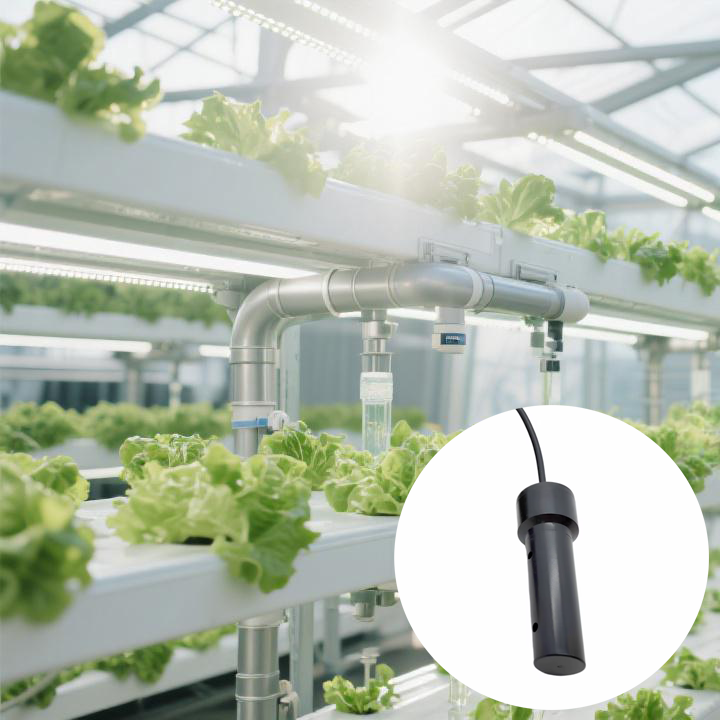The Philippines is an archipelagic nation with a long coastline and abundant aquatic resources. Aquaculture (especially of shrimp and tilapia) is a vital economic pillar for the country. However, high-density farming leads to increased carbon dioxide (CO₂) concentrations in water, primarily originating from the respiration of farmed organisms and the decomposition of organic matter.
Excessively high CO₂ levels pose direct threats:
- Water Acidification: CO₂ dissolves in water to form carbonic acid, lowering the pH and affecting the physiological functions of aquatic life. This is particularly detrimental to the calcification process of shellfish and crustaceans (like shrimp), leading to poor shell growth.
- Toxicity: High concentrations of CO₂ are narcotic and toxic to fish, damaging their respiratory systems and increasing susceptibility to disease.
- Stress Response: Even below acute toxicity levels, long-term exposure to elevated CO₂ causes stress in farmed species, resulting in stunted growth and reduced feed conversion efficiency.
While traditional pH monitoring can indirectly reflect acidity changes, it cannot distinguish the source of the acidity (whether it’s from CO₂ or other organic acids). Therefore, direct, real-time monitoring of the partial pressure of carbon dioxide (pCO₂) in water becomes crucial.
Hypothetical Case: A Shrimp Farm in Pangasinan, Luzon
Project Name: IoT-based Smart Water Quality Management Project
Location: A medium-sized shrimp farm in the province of Pangasinan on the island of Luzon.
Technical Solution:
The farm implemented an Internet of Things (IoT) monitoring system integrated with water-quality CO₂ gas sensors. The core components included:
- In-situ Submersible CO₂ Sensor: Utilizing Non-Dispersive Infrared (NDIR) technology. This sensor offers high accuracy and long-term stability, enabling direct measurement of the partial pressure of dissolved CO₂ gas.
- Multi-Parameter Water Quality Sonde: Simultaneously measuring key parameters like pH, Dissolved Oxygen (DO), temperature, and salinity.
- Data Logger and Transmission Module: Sensor data is transmitted in real-time to a cloud platform via a wireless network (e.g., 4G/5G or LoRaWAN).
- Central Control and Alert System: Farmers can view real-time data and historical trends on a computer or mobile app. The system is programmed with safety thresholds for CO₂ concentration; an automatic alarm (SMS or app notification) is triggered if levels exceed the limit.
Application Process and Value:
- Real-time Monitoring: Farmers can monitor the CO₂ levels in each pond 24/7, moving away from reliance on manual, intermittent water sampling and lab analysis.
- Precise Decision-Making:
- When the system alerts rising CO₂ levels, farmers can remotely or automatically activate aerators. Increasing dissolved oxygen not only meets biological demand but also promotes the breakdown of organic matter by aerobic bacteria, reducing CO₂ production at the source.
- Correlating data with pH and temperature allows for a more accurate assessment of the overall health of the water and the toxic effects of CO₂.
- Improved Benefits:
- Risk Reduction: Effectively prevents large-scale disease outbreaks or mortality events in shrimp stocks caused by CO₂ accumulation.
- Increased Yield: Maintaining optimal water quality leads to faster growth rates and improved feed efficiency, ultimately boosting production and economic returns.
- Cost Savings: Reduces unnecessary water exchange (saving water and energy) and medication use, enabling a more environmentally friendly and sustainable farming model.
Other Potential Application Areas (in the Philippine Context)
- Groundwater and Drinking Water Safety: Many areas in the Philippines rely on groundwater. Monitoring CO₂ in groundwater helps assess the impact of geological activity (e.g., volcanism) on water quality and determines its corrosiveness, which is significant for pipeline protection.
- Environmental Research and Climate Change Monitoring: Philippine waters are important carbon sinks. Research institutions may deploy high-precision CO₂ sensors in key marine areas (e.g., coral reef regions) to study ocean CO₂ absorption and the resulting ocean acidification, providing data to protect fragile ecosystems like coral reefs.
- Wastewater Treatment: In urban wastewater treatment plants, monitoring CO₂ emissions during biological processes can help optimize treatment efficiency and calculate carbon footprints.
Challenges and Future Outlook
- Challenges:
- Cost: High-precision in-situ sensors remain relatively expensive, representing a significant initial investment for small-scale farmers.
- Maintenance: Sensors require regular calibration and cleaning (to prevent biofouling), demanding a certain level of technical skill from users.
- Infrastructure: Stable power supply and network coverage can be problematic in remote island areas.
- Outlook:
- As sensor technology advances and costs decrease, its application in the Philippines will become more widespread.
- Integration with Artificial Intelligence (AI) will enable systems not only to warn but also to predict water quality trends via machine learning, paving the way for fully automated aeration and feeding—moving towards true “smart aquaculture.”
- The government and industry associations may promote this technology as a key tool for enhancing the international competitiveness and sustainability of the Philippine aquaculture sector.
Conclusion
While finding a specific document titled “Case Study of CO₂ Sensor Application by XX Company in the Philippines” might be challenging, it is certain that water-quality CO₂ sensors have significant and urgent application potential in the Philippines, particularly in its cornerstone aquaculture industry. It represents a necessary shift from traditional experience-based farming to data-driven, precision management, which is essential for ensuring the country’s food security and economic stability.
We can also provide a variety of solutions for
1. Handheld meter for multi-parameter water quality
2. Floating Buoy system for multi-parameter water quality
3. Automatic cleaning brush for multi-parameter water sensor
4. Complete set of servers and software wireless module, supports RS485 GPRS /4g/WIFI/LORA/LORAWAN
For more water sensors information,
please contact Honde Technology Co., LTD.
Email: info@hondetech.com
Company website: www.hondetechco.com
Tel: +86-15210548582
Post time: Sep-26-2025


